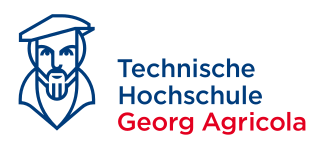
The Technische HochschuleMittelhessen University of Applied Sciences is a German Fachhochschule for bachelor's and master's studies in the cities of Giessen, Friedberg, and Wetzlar.

Technical University of Applied Sciences Augsburg is a public university located in Augsburg, Germany. It was founded in 1971, but its institutional roots as an academy of arts date back to 1670. With more than 7,000 students it is one of the largest institutions of its kind in Bavaria. 185 professors as well as 408 lecturers in 7 faculties are employed in the university. Currently, 23 undergraduate and 22 graduate degree programmes are offered.

The Technische Universität Darmstadt, commonly known as TU Darmstadt, is a research university in the city of Darmstadt, Germany. It was founded in 1877 and received the right to award doctorates in 1899. In 1882, it was the first university in the world to set up a chair in electrical engineering. In 1883, the university founded the first faculty of electrical engineering and introduced the world's first degree course in electrical engineering. In 2004, it became the first German university to be declared as an autonomous university. TU Darmstadt has assumed a pioneering role in Germany. Computer science, electrical engineering, artificial intelligence, mechatronics, business informatics, political science and many more courses were introduced as scientific disciplines in Germany by Darmstadt faculty.

The Berlin-Brandenburg capital region is one of the most prolific centers of higher education and research in the world. It is the largest concentration of universities and colleges in Germany. The city has four public research universities and 27 private, professional and technical colleges (Hochschulen), offering a wide range of disciplines. Access to the German university system is tuition free.

The Bauakademie in Berlin, Germany, was a higher education institution for the art of building to train master builders. Founded on 18 March 1799 by King Frederick William III, the institution originated from the construction department of the Academy of Fine Arts and Mechanical Sciences, which emphasized the aesthetic elements of the art of building while ignoring the technical. Thus, the governmental Upper Building Department ("UBD") decided to establish an entirely new building educational institution named "Bauakademie". In 1801, the institution was incorporated into the UBD.

The Brandenburg University of Technology Cottbus–Senftenberg was founded in 1991 and is a technical university in Brandenburg, Germany with campuses in Cottbus and Senftenberg. The university has 185 professors, 640 additional academic staff and more than 7,000 students, of which 2,350 are of foreign origin from more than 100 nations.
The Doktoringenieur is the German engineering doctorate degree, comparable to the Doctor of Engineering, Engineering Doctorate, Doctor of Science (Engineering), Doctor of Science (Technology) or a PhD in Engineering or Architecture.

Hochschule für Technik und Wirtschaft or HTW Berlin in Berlin, Germany is the largest public University of Applied Sciences in Berlin and Eastern Germany. It has over 13,000 students and 75 programs in areas of engineering, computer science, business, culture and design. At 26.4%, HTW Berlin has one of the highest proportions of international students in Germany.

The Silo Canal, or Silokanal in German, is a canal in the German state of Brandenburg. It provides a short cut for vessels navigating the River Havel, avoiding the winding and constricted navigation through the city of Brandenburg an der Havel.
The Zurich University of Applied Sciences located in the city of Winterthur, with facilities in Zurich and Wädenswil, is one of the largest University of Applied Sciences in Switzerland and is part of the Zürcher Fachhochschule.

The University of Applied Sciences Ludwigshafen is a public university located in Ludwigshafen, Germany. It was founded in 1965 as Higher School of Commerce Ludwigshafen. In 1971 it became part of the University of Applied Sciences Rhineland Palatinate, which split up into seven autonomous universities in 1991.

The Technical University of Applied Sciences Würzburg-Schweinfurt is a technical university in Germany, which was founded originally in 1807, and was restructured during 1971. The university is among the applied sciences universities in Germany with over 150 partner universities worldwide. The university is located in Bavaria with campuses in Würzburg and Schweinfurt.
Peter Ludwig Gülke is a German conductor and musicologist.

The Technische Hochschule Georg Agricola is a state-accredited, private university of applied sciences based in Bochum, Germany. It was founded in 1816 as a Bergschule to train mining officials and mining foremen (Steiger) and, in the 20th century, grew into an engineering college and later a university. It has borne the name of the polymath and mining pioneer Georgius Agricola since 1995.

Alwin Oswald Walther was a German mathematician, engineer and professor. He is one of the pioneers of mechanical computing technology in Germany.

The Department of Computer Science is a department of the Technische Universität Darmstadt. With a total of 36 professorships and about 3,700 students in 12 study courses, the Department of Computer Science is the largest department of the university. The department shapes the two research profile areas "Cybersecurity (CYSEC)" and "Internet and Digitization (InDi)" of the university.

The St. Peter and Paul cathedral is the largest medieval church in Brandenburg an der Havel, Brandenburg, Germany. Construction began in 1165 as a Romanesque Saalkirche. It was expanded several times to a three-aisled Brick Gothic basilica. The cathedral is commonly designated “the cradle of the Mark Brandenburg” for its historic significance. The patron saints are Peter and Paul.

The Technical University Ingolstadt of Applied Sciences is a German public university of applied sciences located in Ingolstadt. Founded in 1994, it currently has around 6,500 students in five faculties and offers more than 80 courses of study. The central focus of research and teaching are in technology and business. The main campus is located in the center of Ingolstadt. The second campus is located in Neuburg an der Donau.
The University of Applied Sciences of the Grisons is a university of applied sciences in Switzerland, active in teaching, further education, research, and services. Since January 1, 2020, it has been an independent university of applied sciences.

















